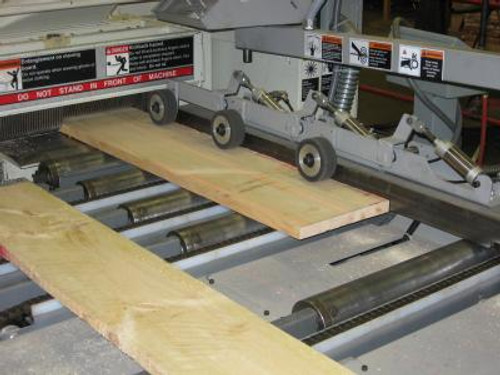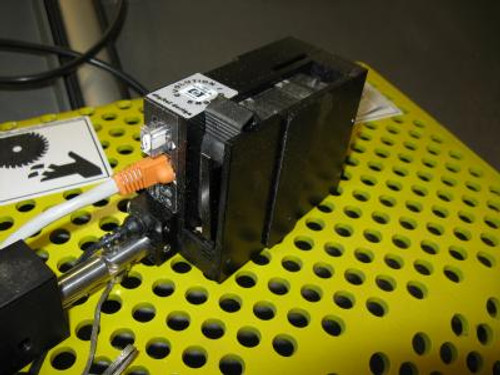Product Description
Cameron Automation's The Automated Opti-Rip
The Automated Opti-Rip rip saw optimization system is very adaptable to many material handling systems. Some of our systems are fed manually from a scissor lift of planed lumber. Some systems have a landing deck and are fed from the outfeed conveyor of a planer and some systems are fed by destackers and singulation machines.
Advantages:
- Increases Yield 5-10%
- Boards Can be Fed Skewed for Maximum Yield
- Feeds Lumber Automatically
- Software Includes: Simulations & Arbor Set Up
Customers who will benefit from the Automated Opti-Rip:
- Those who currently have mid sized ripping operations.
- A fixed arbor gang saw 24" to 40" wide.
- Production rates between 10,000 and 21,000 bd. ft.
The Automated Opti-Rip rip optimization system works as follows: A simple chain conveyor places the boards, one at a time, on a servo-controlled series of the belts. The belts then accelerate the board to be processed past multiple sensors that measure the board every foot for the length and width, to determine its full profile. Next, the belts accurately position the board under a series of laser lights, presenting the operator with the optimum rip combination based on the measured width.
The operator can then choose an alternate rip pattern, fine tune the positioning and/or skew the board to the angle that will result in the optimized rip. When the operator is happy with the positioning of the board, a button is pressed and the belts then position the board in front of the rip saw where a series of pinch rollers lift the board and feed it into the saw. A major advantage to this novel method is that lumber can be skewed on the conveyor, resulting in an increase in yield.
Existing gang rip saw optimization systems incorporate a straight fence, usually working in conjunction with cant rollers, to position the lumber before it enters the saw. Unfortunately, this orientation is not always the proper orientation to achieve maximum yield. The Automated Opti-Rip Servo Infeed solves this problem by using a precision servo-controlled belt system to position the lumber from the belt and feed it into the saw, maintaining its orientation.











